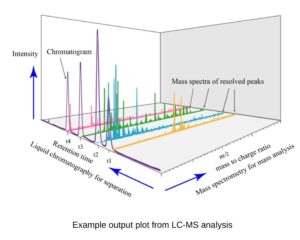Cell-based Therapies
Safety, Efficacy, and Quality Assessment
We combine cell culture, flow cytometry, and gene expression to prove the safety and effectiveness of your products.
Our services are avalible for:
- Cell-based products
- Biological produtcs
Cell-based Therapies
Detection and quantification of lactate, glutamine/glutamate, ammonia and glucose in cell culture supernatant samples.
Technique: Liquid chromatography–mass spectrometry (LC–MS).

Evaluation and photodocumentation by inverted microscopy of cell differentiation in three cell lines: osteogenesis (staining with Alizarin Red S), adipogenesis (Oil Red staining) and chondrogenesis (toluidine blue staining).
Technique: Cell culture
Reference: RDC Nº 508, of may 27, 2021.
Detection of the presence of gDNA with specific primers for 16S-23S intergenic regions of Mycoplasma species with the highest incidence of cell culture contamination (M. arginini, M. fermentans, M. hominis, M. hyorhinis, M. orale, M. salivarium , M. pirum, A. laidlawii) using the qPCR technique.
Technique: qPCR
Reference: FDA Points to Consider in the Characterization of Cell Lines Used to Produce Biologicals.
Sample preparation and detection of penicillin and streptomycin in cell culture supernatant by LC-MS.
Technique: Liquid chromatography–mass spectrometry (LC–MS).
Semiquantitative detection of endotoxins present in cell culture supernatant using the Gel Clot LAL method.
Technique: Limulus amebocyte lysate (LAL)
Reference: FDA Points to Consider in the Characterization of Cell Lines Used to Produce Biologicals.
Quantification, via LC/MS, of dimethyl sulfoxide (DMSO) with pre-established calibration curve.
Technique: Liquid chromatography–mass spectrometry (LC–MS).
Detection of anaerobic bacteria, aerobic bacteria, yeasts and fungi through the inoculum of samples in Thioglycolate and Soy Casein Broth.
Reference: Brazilian Pharmacopoeia, 6th edition sterility test (5.5.3.2.1).
Analysis for the quantification of total proteins in different types of samples, cell lysate, secretome, solution with free proteins. Used in techniques such as Western Blotting. The BCA assay has a detergent based on bicinchoninic acid (BCA) that allows colorimetric detection and quantification of total proteins.
Immunophenotypic analysis by flow cytometry for Mesenchymal Stem Cell markers, with interpretation of positivity when ≥ 95% positive for CD73, CD90 and CD105 and ≤ 2% negative for CD34, CD45, CD11b or CD14, CD19 or CD79α and HLA-DR (International Society for Cell Therapy). Technique: Flow cytometry (CD90, CD44, CD105 e CD73) BD FACSCalibur™.
Reference: FDA Center for Biologics Evaluation and Research ADVANCING REGULATORY SCIENCE -Office of Tissues and Advanced Therapies Division of Cellular and Gene Therapies Cellular and Tissue Therapy Branch
EMA Stem cell-based medicinal products – Scientific guideline
Nucleic acid detection of CMV, HIV-1 and HIV-2, HTLV-I and HTLV-II, EBV, HBV, HCV and B19 viruses. Technique: qPCR, RT-qPCR, Infectious viral titer and TCID50.
Reference: RDC Nº 508, of may 27, 2021.
